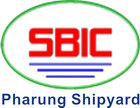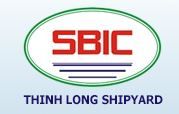IDTechEx Research Analyses the Dark Side of Hydro Power
BOSTON, Jan. 29, 2019 /PRNewswire/ -- Hydroelectric power is by far the most successful form of so-called zero-emission production of electricity but it has a dark side. Large hydro schemes drown huge areas of vegetation that emit methane for 100 years, far more damaging than carbon dioxide in global warming. Concrete causes 8% of carbon dioxide emissions. Dams have collapsed in Brazil, Cambodia and Vietnam recently killing many people. Expensive dams are on some rivers that are drying up. This brings new meaning to the term, "stranded assets."
The biggest hit is economic. The cost of hydro is not dropping by much whereas solar costs are plummeting so solar is overtaking it as the primary zero-emission energy source. Solar has problems of ugliness and grabbing huge areas of real estate. It is badly intermittent due to night time and bad weather. Compensating with batteries brings inefficiency and large costs and can involve poisons and flammability.
Fortunately, three new zero-emission options are easily relocated (no stranded assets: lower financial risk). They are minimally intermittent, often to the point of using fit-and-forget supercapacitors and no battery. There are few malign side effects. None have massive concrete and steel of offshore wind, hydro or tidal barrages: all are plug-and-play. Enter airborne wind energy, wave power and - in both rivers and the sea - new tidal power. Fly a tethered drone where the wind is strong and often continuous, launch a buoy tethered to a generator or fix rotating blades under a moored boat. Silent, virtually invisible and operational in hours, they make electricity at about twice the cost of solar initially, if you ignore the extra battery size and real estate cost of solar. They are already part of the reason why Orkney makes 140% of its energy needs, all zero emission. Ghana has ordered a 100MW wave farm and Bali a 10MW wave farm and a farmer in Norway already deploys the drones. For more see the IDTechEx Research reports, "Airborne Wind Energy 2019-2039" and "Wave, Tidal and Hydro Power 1W-10MW 2018-2038." Indeed, there are now two routes to non-flammable 100kW/kg supercapacitors - where lithium-ion batteries were in 2012 - and they have many superior parameters. See the IDTechEx Research report, "Supercapacitor Materials and Technology Roadmap 2019-2039."
Learn more about further IDTechEx research on zero emission and off-grid energy at www.IDTechEx.com/research/offgrid or contact the IDTechEx Research team at research@IDTechEx.com.
Media Contact:
Charlotte Martin
Marketing & Research Co-ordinator
c.martin@IDTechEx.com
+44(0)1223-812300
View original content to download multimedia:http://www.prnewswire.com/news-releases/idtechex-research-analyses-the-dark-side-of-hydro-power-300785941.html
SOURCE IDTechEx





